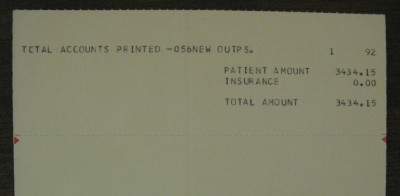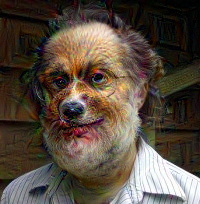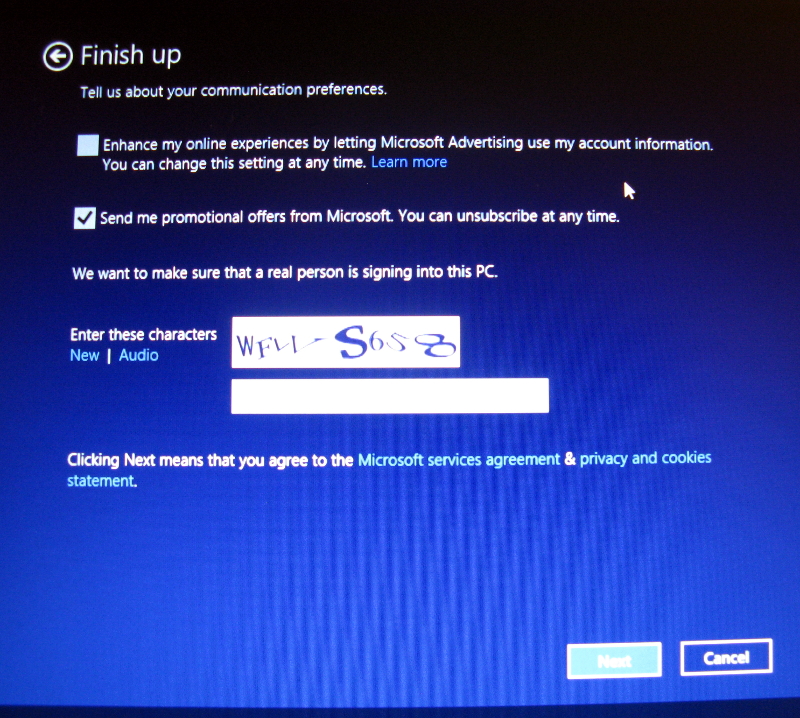Do you have a categorizer model?
Is it working well?
Randomize your data’s categories and feed it to your model to learn.
Enjoy a fun feel for how much your model can memorize randomish data by rote.

Do you have a categorizer model?
Is it working well?
Randomize your data’s categories and feed it to your model to learn.
Enjoy a fun feel for how much your model can memorize randomish data by rote.
Scratch paper gathered from Mom included some stiff cuttings of the bottom lines from a Longview hospital in 1973.

Here are some numbers:
| Patient Amount | Insurance |
|---|---|
| 3434.15 | 0.00 |
| 7883.24 | 614.85 |
| 12280.31 | 11351.91 |
| 2862.78 | 0.00 |
| 13387.37 | 3656.97 |
| 2239.54 | 0.00 |
| 4516.33 | 2745.24 |
| 2632.35 | 0.00 |
| 12645.13 | 3542.17 |
They feel very modern.
To send ad requests from your browser to the bit bucket, a common trick is to use the hosts file to send ad farm HTTP requests to a non-existent server.
A non-existent server can make the browser wait too long for gobs of HTTP requests.
So, give a machine running Apache an interface for an IP address that isn’t used on your local network. 192.168.99.99, for instance. Or 10.252.252.252.
Then add this sort of thing to your /etc/apache2/sites-enabled/200-vhosts file:
<VirtualHost 10.252.252.252> ServerName helload DocumentRoot /var/www/spam_ad_dir/ ErrorLog /var/log/apache2/spam_ad_error.log CustomLog /var/log/apache2/spam_ad_access.log combined RedirectMatch 403 /* </VirtualHost>
Change the IP address as appropriate. And, you can make an empty directory at /var/www/spam_ad_dir/
For amusement, read the spam_ad_access.log.
Well, getting any kind of deep learning thing going is a practical nightmare.
But finally, something worked, if not anything useful.

Note to self: Don’t fly quadcoptors over trees out of range of the controller.
The Syma X5C is now 50 feet high near Lester, Washington on the other side of Stampede Pass.
I hope it’s happy there. Or the tree is. Or both.
Since replacing my eyes’ lens there have been a few times – every week or two, call it – when I see an hallucination out of the corner of an eye.
They move. Fast. And are gone.
What was that?? A rabbit? A car? A leaf falling where it shouldn’t?
They always seem like … something. Something identifiable.
But then they are gone and forgotten.
Nothing to see here, folks. Move on.
Coupled with more apparent oddities of new lenses – weird depth perception, fluid focus, bright blue world – these hallucinations do show that vision is not a camera.
So, now I wonder – just where in the brain is our GPU? Hey, it’s no new story that what we see in our mind’s eye is highly processed. But some gizmo has to render that highly processed information back in to pixels. That gizmo is impressive. And it’s not surprising the works of such a gizmo would be gummed up when its raw input is changed.
(Yes. I also believe that “gizmo” is a misleading representation of this aspect of the vision system’s architecture. It might make more sense to think of the image in our head as being heavily shopped. With parts of the image variably selected from many shopped alternatives.)
As can be clearly seen by the octal values, this is a scan of the mylar tape of the Super Wrinkle boot loader for the APS-73 Computer used in Autologic typesetters.
Super Wrinkle, if I recall, was the ultimate boot loader – a worthy successor to the famous Wrinkle loader. Super Wrinkle required the minimum possible switch toggling to be read from the tape reader. Once it overwrote the toggled instructions, it read a more complex, generic, non-hacky loader. This had to be done after any power cycle / reset / program failure / hardware glitch.
The alternative to toggling in the instructions to read an infinite number of (Super Wrinkle) bytes from the tape reader was too expensive for everyday computer use. We’re talking $27 for a mighty, 256 byte ROM chip. That was back when $27 was $27, mind you. One customer built such a device out of discrete diodes to save the cost. The word was it was quite a monstrosity.
Monday I was sedated and had my big-cataracted, right lens replaced with a CrystaLens by Dr. Jarstad at Evergreen Eye Center in Federal Way.
A bunch of eye-drops, at least one 13 hour sleep, and the eye is starting to see things without a sheet of turbulent water in the way.
The kitchen’s fluorescent lights made one thing very, very clear. Currently, the CrystaLens eye sees a far cooler color temperature. Two of the three kitchen lights were a bright blue in the new right eye, a warm orange in the “normal” eye. Here’s an image with two roughly identical sides on one of my monitors (the right-eye side has a bit of a blue glow on the other monitor).
That is, if the left eye sees the left side and the right eye sees the right side, the two sides look pretty close to the same.
The left eye version of this image doesn’t see a huge difference between the two sides. The right eye version sees a stronger blue-ish on the left, green-ish on the right with quite a bit of intensity difference.
There are a number of odd artifacts having to do with surrounding colors. But, we’ll see how things change in the next week or so. The doctor indicated I had quite a bit of swelling so it’ll be some time before things settle down.
But, at least today, the eye hasn’t felt like there’s a chunk of rock in it. That’s a huge improvement.
Even though I know why this appeared as I stepped through the, ah, extensive, “We are from Microsoft and we’re here to help.” Win8 setup screens, it just doesn’t seem right to stumble on a captcha in a new PC setup sequence.
Welcome to Acer, where our laptop is top-of-the-line and our Win8 desktop makes and AOL-by-default look sparse.
